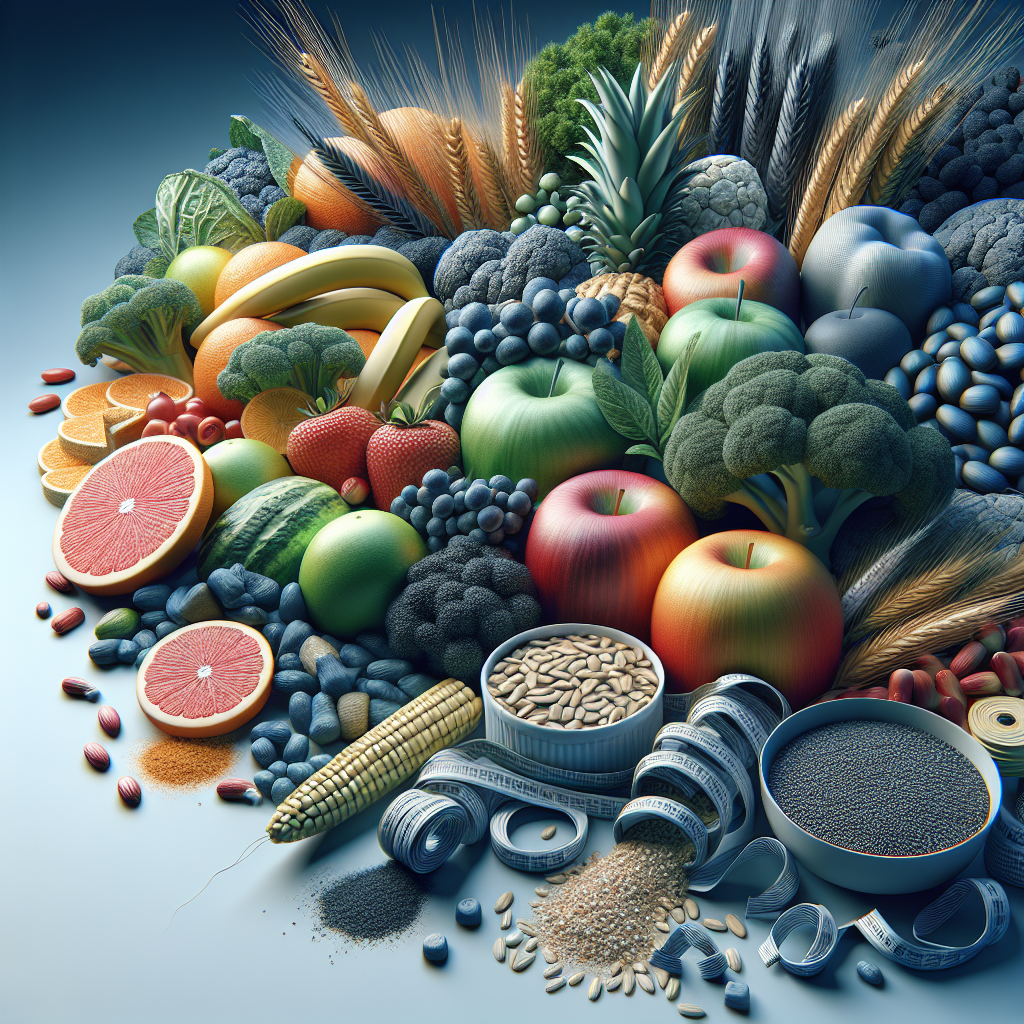Clean eating emphasizes a commitment to whole, unprocessed foods while avoiding highly processed options laden with refined sugars, unhealthy fats, and artificial ingredients. This approach not only enhances one’s overall well-being but also fosters better energy levels and weight management. By integrating nutrient-dense foods into daily meals and adopting mindful eating habits, individuals can make significant strides towards a healthier lifestyle.
The Foundations of Healthy Eating
Embracing the principles of healthy eating serves as the bedrock upon which the clean eating philosophy stands. This foundation encompasses several key elements:
Whole Foods
Whole foods are those that are minimally processed and free from artificial additives. These include:
- Fruits and Vegetables: Packed with vitamins, minerals, and antioxidants.
- Whole Grains: Foods like brown rice, quinoa, and oats which maintain their bran and germ.
- Lean Proteins: Sources such as chicken, turkey, tofu, lentils, and beans.
- Healthy Fats: Options like avocados, nuts, seeds, and olive oil.
Balanced Nutrition
A balanced diet is essential for providing the body with various nutrients. This can be achieved through:
- Macronutrients: Ensuring a balance of carbohydrates, proteins, and fats.
- Micronutrients: Incorporating vitamins and minerals from diverse sources to support overall health.
Mindful Eating
Adopting mindful eating practices promotes a better relationship with food. This involves:
- Paying attention to hunger cues.
- Eating slowly and savoring meals.
- Being conscious of the eating environment.
Understanding the Importance of Clean Eating Principles
Enhanced Nutritional Quality
By prioritizing whole foods, individuals gain access to a broader spectrum of nutrients. Research suggests that a diet rich in fruits and vegetables can reduce the risk of chronic diseases by:
- Lowering blood pressure.
- Reducing the risk of heart disease.
- Enhancing gut health.
Weight Management
Eating clean aids in maintaining a healthy weight. Whole foods tend to be more filling than processed alternatives, leading to fewer calories consumed overall. According to a study published in the American Journal of Clinical Nutrition, people who switch to a clean eating regime can experience significant reductions in body fat over time.
Improved Mental Well-being
Nutrition significantly influences mental health. Foods high in omega-3 fatty acids, such as salmon and walnuts, have been shown to alleviate symptoms of depression and anxiety. A clean diet that avoids high-sugar and high-fat processed foods can contribute to greater emotional stability.
Long-Term Health Benefits
The long-term benefits of clean eating habits include:
- Reduced risk of chronic diseases, such as diabetes and certain cancers.
- Improved digestive health due to higher fiber intake from whole foods.
- Enhanced energy levels and improved physical performance.
Practical Guidelines for Clean Eating
Implementing the principles of clean eating into daily life doesn’t have to be daunting. Here are actionable strategies to help individuals transition towards healthier eating habits, effectively leading to a cleaner diet.
1. Prioritize Whole, Minimally Processed Foods
Shopping smart is essential. When browsing grocery aisles, focus on the perimeter where fresh produce, dairy, and meats are typically found. Limit trips to the middle aisles, where processed snacks and sugary cereals abound.
Food substitutions can help transition into clean eating smoothly:
- Choose brown rice instead of white rice.
- Opt for whole grain bread over white bread.
- Select fresh fruit instead of sugary desserts.
2. Embrace Seasonal and Local Produce
Buying locally sourced produce not only supports the community but also ensures that fruits and vegetables are fresher. Seasonal foods often have better flavor and nutritional value.
Benefits of Eating Seasonally:
- Cost-effective: Seasonal items often come at lower prices.
- Nutritional benefits: Foods consumed in season are rich in nutrients.
- Environmental impact: Reduced carbon footprint associated with transportation.
3. Meal Preparation and Planning
Planning is key to successful clean eating. Engage in meal prep once a week to ensure you have healthy meals readily available. Use the following steps:
- Create a meal plan: Outline the meals for the week, ensuring they include a balance of proteins, carbohydrates, and fats.
- Prepare a shopping list: Focus on whole foods and stick to it to avoid impulse buys.
- Batch cooking: Prepare larger portions of staples like grains and proteins to use throughout the week.
4. Read Labels with Care
Being informed about processed foods is crucial. When you must purchase packaged items, pay attention to:
- Ingredient lists: Choose foods with shorter ingredient lists and recognizable items.
- Nutritional content: Look for lower levels of saturated fat, added sugars, and sodium.
5. Incorporate Mindful Eating Practices
Mindfulness can dramatically change your relationship with food. Develop these habits:
- Limit distractions: Turn off screens during meals to focus on the food itself.
- Chew slowly: This aids digestion and enhances flavor.
- Portion control: Serve smaller portions to prevent overeating.
6. Hydration Matters
Staying hydrated is an integral part of clean eating. Aim for:
- Water: This should be the primary beverage. Daily intake should be adjusted based on activity level.
- Infused Water: Incorporate fruits and herbs for a refreshing alternative.
- Limit sugary drinks: Sodas and fruit juices often contain high levels of added sugars.
Creating a Clean Eating Meal Plan
To assist in the transition towards clean eating, a sample week-long meal plan can be highly beneficial:
Sample Clean Eating Meal Plan
| Day | Breakfast | Lunch | Dinner | Snacks |
|---|---|---|---|---|
| Monday | Overnight oats with fruits | Quinoa salad with beans | Grilled chicken with broccoli | Carrot sticks with hummus |
| Tuesday | Smoothie with spinach, banana | Turkey wrap with whole grain wrap | Stir-fried tofu with vegetables | Handful of almonds |
| Wednesday | Greek yogurt with granola | Lentil soup | Baked salmon with asparagus | Apple slices with peanut butter |
| Thursday | Whole grain toast with avocado | Chickpea salad | Quinoa stuffed peppers | Celery sticks with guacamole |
| Friday | Scrambled eggs with spinach | Brown rice & chicken stir fry | Vegetable curry with brown rice | A mix of berries |
| Saturday | Banana pancakes (whole grain) | Tuna salad | Zucchini noodles with pesto | Almonds and dried fruit |
| Sunday | Chia seed pudding | Roasted vegetable sandwich | Grilled shrimp with salad | Plain popcorn |
Common Challenges in Clean Eating
Transitioning to a cleaner diet can come with hurdles. However, recognizing these challenges allows individuals to better prepare and avoid common pitfalls.
1. Time Constraints
Many people believe they don’t have time for meal prep. Combat this by:
- Utilizing slow cookers: For cook-and-forget meals.
- Freezing meals: To have access to home-cooked items without much effort.
2. Convenience Foods
The allure of convenience foods can be strong. When choosing convenience options:
- Opt for frozen vegetables or pre-chopped fresh produce as a bridge.
- Look for minimally processed frozen meals with clean ingredients.
3. Dining Out
Eating out can pose challenges, but there’s no need to derail clean eating principles. To maintain your commitment while eating out:
- Select dishes with recognizable ingredients.
- Ask for dressings and sauces on the side.
- Prioritize grilled, baked, or steamed dishes over fried options.
The Impact of Clean Eating on Physical Activity
Clean eating goes hand in hand with physical fitness. The benefits of clean eating on performance and recovery include:
Enhanced Recovery
Nutrient-dense foods help repair and regenerate muscle tissue post-exercise. Essential macronutrients play a pivotal role:
- Proteins rebuild muscles.
- Carbohydrates restore energy supplies.
- Fats aid in hormone production essential for recovery.
Increased Energy Levels
A clean diet provides a steady energy supply, as opposed to the spikes and crashes often associated with sugary snacks. This sustained energy leads to improved performance over time.
Tracking Progress and Adjusting Goals
To remain committed to clean eating, tracking progress is vital. Consider the following approaches:
1. Food Journaling
Maintain a food journal to monitor what you’re eating and how it makes you feel. This also aids in:
- Identifying patterns and triggers.
- Understanding emotional connections to food.
2. Regular Health Checkups
Assessing changes through health checkups is essential:
- Regular blood tests can show improvements in cholesterol levels, blood sugar, and nutrient deficiencies.
- Weight or body composition assessments can indicate progress toward health goals.
3. Set Realistic Goals
When starting the clean eating journey, create specific, measurable, attainable, relevant, and time-bound (SMART) goals. Examples include:
- Increase vegetable intake to five servings a day within a month.
- Replace sugary snacks with fruits at least four days a week.
Conclusion
Adopting the principles of clean eating cultivates a healthier lifestyle characterized by vibrant health, sustained energy, and a better relationship with food. By focusing on whole foods, practicing mindful eating, and preparing meals with care, individuals can not only enhance their nutritional profiles but also experience long-term health benefits. The path to clean eating may present challenges, yet the rewards are undoubtedly worth the effort. Embrace this journey, and nourish your body with intention and purpose, leading to a vibrant, healthier life.
With this structured approach to clean eating, individuals can uncover the potential of whole foods and mindful choices, ultimately leading to transformative lifestyle changes that will resonate for years to come.












